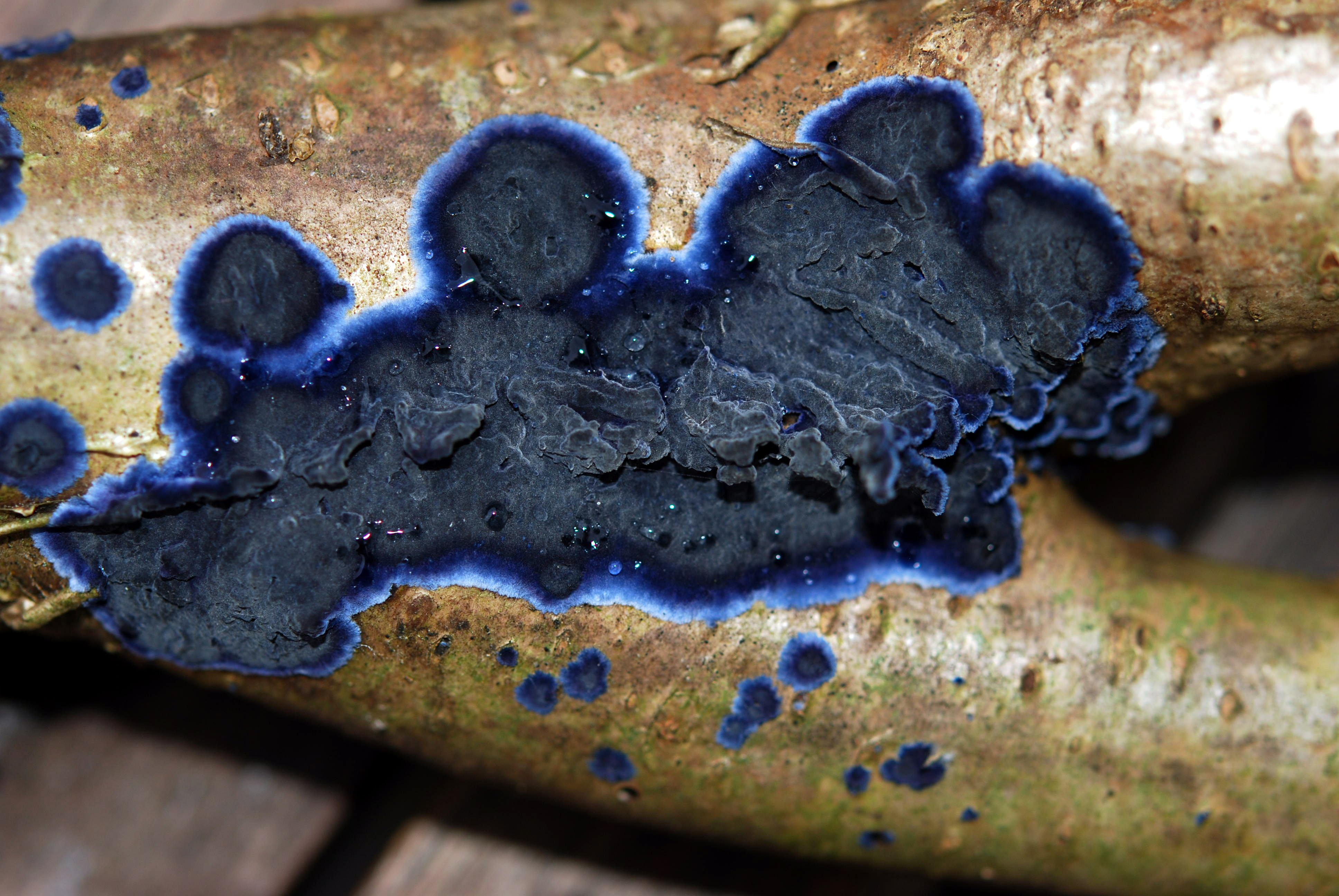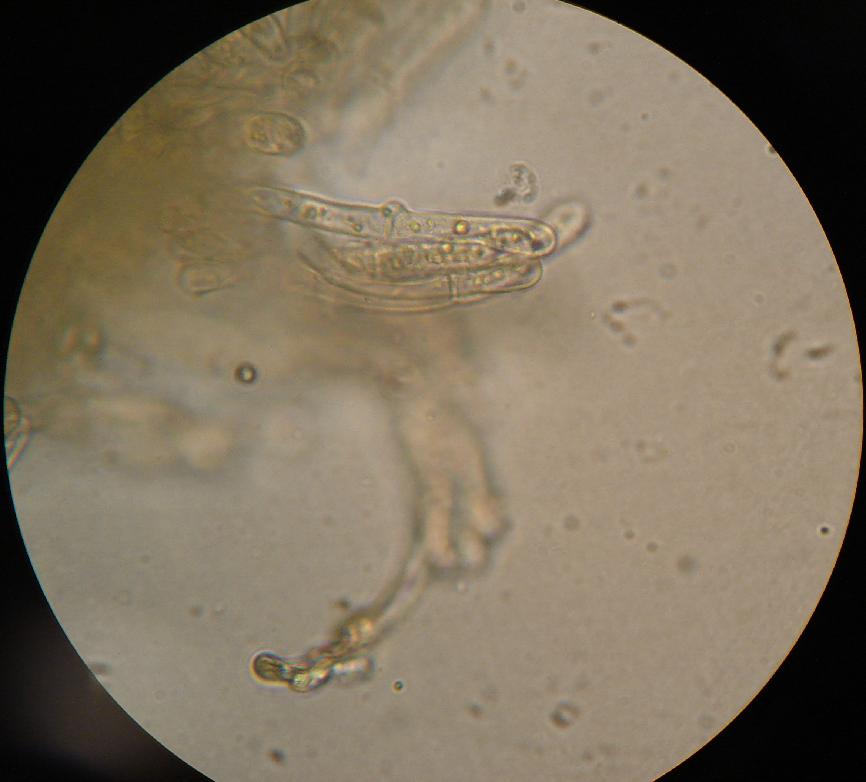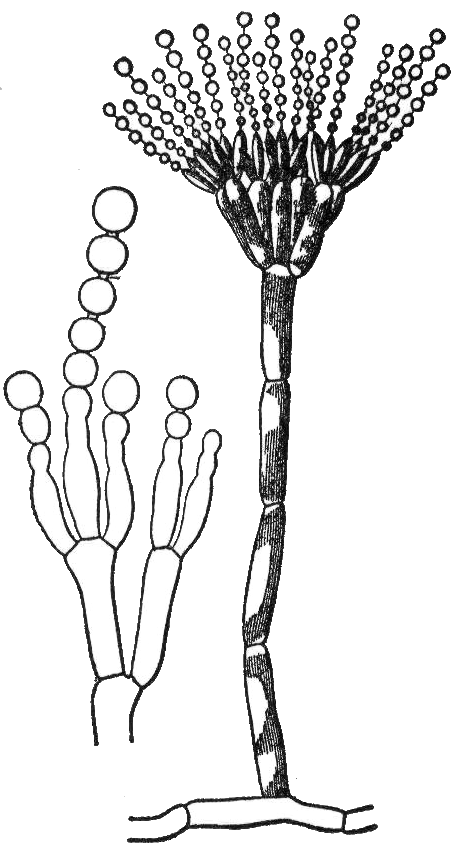|
Leifiporia
''Leifiporia'' is a genus of two species of polypore, poroid wood-decay fungus#White rot, white rot crust fungi in the family Polyporaceae. The genus was circumscription (taxonomy), circumscribed by Chinese mycologists in 2016 to accommodate the type species ''Leifiporia rhizomorpha''. Taxonomy ''Leifiporia'' was circumscribed in 2016 by Chinese mycologists Changlin Zhao, Fang Wu, and Yu-Cheng Dai. Molecular phylogenetics, Molecular analysis shows that ''Leifiporia'' belongs to the "core polyporoid clade", a grouping of fungi roughly equivalent to the family Polyporaceae. The generic name honours Norwegian mycologist and polypore specialist Leif Ryvarden. The genus is phylogenetically close to the fungi ''Diplomitoporus overholtsii'' and ''Lopharia cinerascens''. It also groups near ''Pycnoporus'' and ''Trametes''. A new combination, ''Leifiporia eucalypti'', was proposed by the authors. This fungus, originally species description, described as ''Dichomitus eucalypti'' by Ryvarden ... [...More Info...] [...Related Items...] OR: [Wikipedia] [Google] [Baidu] |
Leifiporia Eucalypti
''Leifiporia'' is a genus of two species of poroid white rot crust fungi in the family Polyporaceae. The genus was circumscribed by Chinese mycologists in 2016 to accommodate the type species ''Leifiporia rhizomorpha''. Taxonomy ''Leifiporia'' was circumscribed in 2016 by Chinese mycologists Changlin Zhao, Fang Wu, and Yu-Cheng Dai. Molecular analysis shows that ''Leifiporia'' belongs to the "core polyporoid clade", a grouping of fungi roughly equivalent to the family Polyporaceae. The generic name honours Norwegian mycologist and polypore specialist Leif Ryvarden. The genus is phylogenetically close to the fungi '' Diplomitoporus overholtsii'' and ''Lopharia cinerascens''. It also groups near ''Pycnoporus'' and '' Trametes''. A new combination, '' Leifiporia eucalypti'', was proposed by the authors. This fungus, originally described as '' Dichomitus eucalypti'' by Ryvarden in 1985, is found in Australia. Description ''Leifiporia'' species are characterized by crust-like f ... [...More Info...] [...Related Items...] OR: [Wikipedia] [Google] [Baidu] |
Polyporaceae
The Polyporaceae are a family of poroid fungi belonging to the Basidiomycota. The flesh of their fruit bodies varies from soft (as in the case of the dryad's saddle illustrated) to very tough. Most members of this family have their hymenium (fertile layer) in vertical pores on the underside of the caps, but some of them have gills (e.g. '' Panus'') or gill-like structures (such as '' Daedaleopsis'', whose elongated pores form a corky labyrinth). Many species are brackets, but others have a definite stipe – for example, '' Polyporus badius''. Most of these fungi have white spore powder but members of the genus '' Abundisporus'' have colored spores and produce yellowish spore prints. Cystidia are absent. Taxonomy In his 1838 work ''Epicrisis Systematis Mycologici seu Synopsis Hymenomycetum'', Elias Magnus Fries introduced the "Polyporei". August Corda published the name validly the following year, retaining Fries's concept. American mycologist William Alphonso Murrill, ... [...More Info...] [...Related Items...] OR: [Wikipedia] [Google] [Baidu] |
Leif Ryvarden
Leif Randulff Ryvarden (born 9 August 1935) is a Norwegian mycologist. Early life and education Leif Ryvarden was born in Bergen as a son of Einar Norberg Johansen (1900–1959) and Hjørdis Randulff (1912–1975). He finished his secondary education at Berg in 1954 and took basic military education from 1957 to 1958 and in 1956 he changed his last name from Johansen to Ryvarden. He studied chemistry at the Norwegian Institute of Technology. In 1961 he ran for election as chairman of Student Society in Trondheim, albeit unsuccessfully. In 1963, he graduated with the siv.ing. degree , and later majored in botany at the University of Oslo, taking a cand.real. degree. He also studied in London from 1971 to 1972, a stay that sparked his interest in mycology. Academic career Ryvarden conducted field work in about eighty countries, mostly in a tropical environment. From 1965 to 1966, he was employed as research assistant at the Norwegian Institute of Technology, from 1966 to 1972 ... [...More Info...] [...Related Items...] OR: [Wikipedia] [Google] [Baidu] |
Fungi
A fungus (plural, : fungi or funguses) is any member of the group of Eukaryote, eukaryotic organisms that includes microorganisms such as yeasts and Mold (fungus), molds, as well as the more familiar mushrooms. These organisms are classified as a Kingdom (biology), kingdom, separately from the other eukaryotic kingdoms, which by one traditional classification include Plantae, Animalia, Protozoa, and Chromista. A characteristic that places fungi in a different kingdom from plants, bacteria, and some protists is chitin in their cell walls. Fungi, like animals, are heterotrophs; they acquire their food by absorbing dissolved molecules, typically by secreting digestive enzymes into their environment. Fungi do not photosynthesize. Growth is their means of motility, mobility, except for spores (a few of which are flagellated), which may travel through the air or water. Fungi are the principal decomposers in ecological systems. These and other differences place fungi in a single gro ... [...More Info...] [...Related Items...] OR: [Wikipedia] [Google] [Baidu] |
Annual Plant
An annual plant is a plant that completes its life cycle, from germination to the production of seeds, within one growing season, and then dies. The length of growing seasons and period in which they take place vary according to geographical location, and may not correspond to the four traditional seasonal divisions of the year. With respect to the traditional seasons, annual plants are generally categorized into summer annuals and winter annuals. Summer annuals germinate during spring or early summer and mature by autumn of the same year. Winter annuals germinate during the autumn and mature during the spring or summer of the following calendar year. One seed-to-seed life cycle for an annual plant can occur in as little as a month in some species, though most last several months. Oilseed rapa can go from seed-to-seed in about five weeks under a bank of fluorescent lamps. This style of growing is often used in classrooms for education. Many desert annuals are therophytes, b ... [...More Info...] [...Related Items...] OR: [Wikipedia] [Google] [Baidu] |
Dichomitus Eucalypti
''Dichomitus eucalypti'' is a crust fungus that was described as a new species in 1985 by Norwegian mycologist Leif Ryvarden. The fruit body of the fungus measures 1–2 cm in diameter, and has a white to pale cream pore surface with small round pores numbering 2–3 per millimetre. ''D. eucalypti'' has a dimitic hyphal structure, containing both generative and binding hyphae. Generative hyphae are thin walled with clamps, and measure 2.5–4 μm in diameter. Found in the context, the binding hyphae are solid, hyaline, and measure 2–5 μm. Spores are more or less cylindrical, thin-walled and hyaline, and have dimensions of 7–8.5 by 3–4 μm. The type was collected in George Gill Range ( Northern Territory, Australia), where it was growing on river red gum (''Eucalyptus camaldulensis''). At the time of its description, ''D. eucalypti'' was, in addition to '' D. epitephrus'' and '' D. leucoplacus'', the third species of ''Dichomit ... [...More Info...] [...Related Items...] OR: [Wikipedia] [Google] [Baidu] |
Crust Fungus
The corticioid fungi are a group of fungi in the Basidiomycota typically having effused, smooth basidiocarps (fruit bodies) that are formed on the undersides of dead tree trunks or branches. They are sometimes colloquially called crust fungi or patch fungi. Originally such fungi were referred to the genus '' Corticium'' ("corticioid" means ''Corticium''-like) and subsequently to the family '' Corticiaceae'', but it is now known that all corticioid species are not necessarily closely related. The fact that they look similar is an example of convergent evolution. Since they are often studied as a group, it is convenient to retain the informal (non-taxonomic) name of "corticioid fungi" and this term is frequently used in research papersLarsson K-H, Larsson E, Koljalg U. (2004). High phylogenetic diversity among corticioid homobasidiomycetes. ''Mycological Research'' 108: 983–1002. and other texts. History The genus ''Corticium'' was established by Persoon in 1794 for fungi having s ... [...More Info...] [...Related Items...] OR: [Wikipedia] [Google] [Baidu] |
Basidiocarp
In fungi, a basidiocarp, basidiome, or basidioma () is the sporocarp of a basidiomycete, the multicellular structure on which the spore-producing hymenium is borne. Basidiocarps are characteristic of the hymenomycetes; rusts and smuts do not produce such structures. As with other sporocarps, epigeous (above-ground) basidiocarps that are visible to the naked eye (especially those with a more or less agaricoid morphology) are commonly referred to as mushrooms, while hypogeous (underground) basidiocarps are usually called false truffles. Structure All basidiocarps serve as the structure on which the hymenium is produced. Basidia are found on the surface of the hymenium, and the basidia ultimately produce spores. In its simplest form, a basidiocarp consists of an undifferentiated fruiting structure with a hymenium on the surface; such a structure is characteristic of many simple jelly and club fungi. In more complex basidiocarps, there is differentiation into a stipe, a ... [...More Info...] [...Related Items...] OR: [Wikipedia] [Google] [Baidu] |
Clamp Connection
A clamp connection is a hook-like structure formed by growing hyphal cells of certain fungi. It is a characteristic feature of Basidiomycetes fungi. It is created to ensure that each cell, or segment of hypha separated by septa (cross walls), receives a set of differing nuclei, which are obtained through mating of hyphae of differing sexual types. It is used to maintain genetic variation within the hypha much like the mechanisms found in crozier (hook) during sexual reproduction. Formation Clamp connections are formed by the terminal hypha during elongation. Before the clamp connection is formed this terminal segment contains two nuclei. Once the terminal segment is long enough it begins to form the clamp connection. At the same time, each nucleus undergoes mitotic division to produce two daughter nuclei. As the clamp continues to develop it uptakes one of the daughter (green circle) nuclei and separates it from its sister nucleus. While this is occurring the remaining nuclei ( ... [...More Info...] [...Related Items...] OR: [Wikipedia] [Google] [Baidu] |
Cream (colour)
Cream is the colour of the cream produced by cattle grazing on natural pasture with plants rich in yellow carotenoid pigments, some of which are incorporated into the fresh milk (specifically, the butterfat). This gives a yellow tone to otherwise- white milk at higher fat concentrations (so the colour of dairy cream could be considered partway between the colours of natural cow’s milk and butter). Cream is the pastel colour of yellow, much as pink is to red. By mixing yellow and white, cream can be produced. The first recorded use of ''cream'' as a colour name in English was in 1590. In nature ;Birds * The cream-coloured courser * The cream-coloured woodpecker ;Mammals * The cream-coloured giant squirrel In human culture Art * Cream is used as a skin tone in some forms of art, mostly anime. It is also used to describe the general skin tone of East and South East Asia. Clothing * Men's white tuxedo jackets are usually a shade of cream or ivory to better stand out ... [...More Info...] [...Related Items...] OR: [Wikipedia] [Google] [Baidu] |
Hypha
A hypha (; ) is a long, branching, filamentous structure of a fungus, oomycete, or actinobacterium. In most fungi, hyphae are the main mode of vegetative growth, and are collectively called a mycelium. Structure A hypha consists of one or more cells surrounded by a tubular cell wall. In most fungi, hyphae are divided into cells by internal cross-walls called "septa" (singular septum). Septa are usually perforated by pores large enough for ribosomes, mitochondria, and sometimes nuclei to flow between cells. The major structural polymer in fungal cell walls is typically chitin, in contrast to plants and oomycetes that have cellulosic cell walls. Some fungi have aseptate hyphae, meaning their hyphae are not partitioned by septa. Hyphae have an average diameter of 4–6 µm. Growth Hyphae grow at their tips. During tip growth, cell walls are extended by the external assembly and polymerization of cell wall components, and the internal production of new cell membran ... [...More Info...] [...Related Items...] OR: [Wikipedia] [Google] [Baidu] |
%2C_Zoelen%2C_the_Netherlands.jpg)




